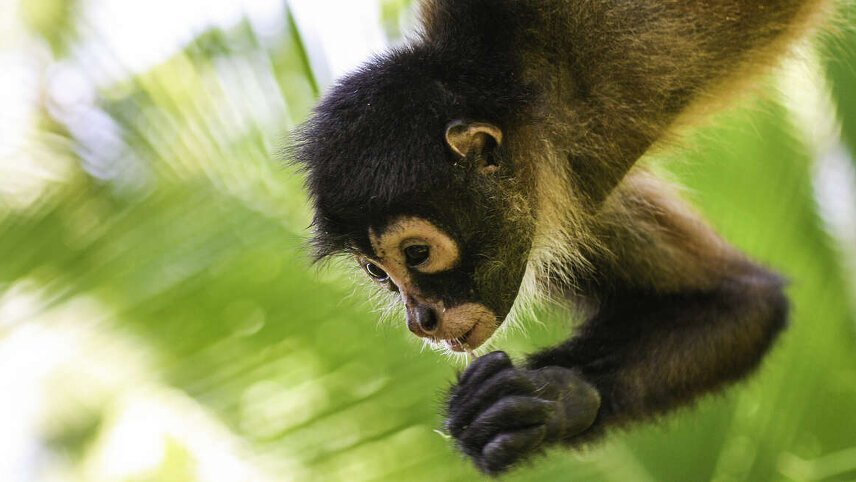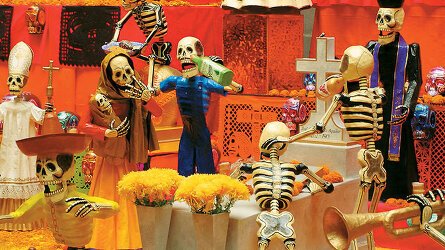Overview
Monteverde - Enjoy a family adventure through lush cloud forests, spotting colourful birds, playful...read more monkeys, and a variety of unique wildlife that makes Costa Rica so captivating.
Osa Peninsular - Embark on a boat journey into the heart of Corcovado National Park for an exceptional wildlife experience. Dubbed 'the most biologically intense place on earth' by America's National Geographic Society, Corcovado is Central America's last remaining extensive area of Pacific tropical lowland rainforest.
Adventure - Treat the whole family to an exhilarating whitewater rafting experience on the Balsa River, with the added options of zip-lining and kayaking for even more excitement.
Itinerary
Our tour starts today in San Jose, Costa Rica's cosmopolitan capital. Lying in a fertile valley, at an altitude of 1,150 metres, coffee and sugar are big industries here - coffee is even planted between buildings and along the roadsides on the outskirts of the city.
For those arriving in time, our tour leader plans to meet you in the hotel reception at 7pm for a welcome meeting, and for those that wish there'll be the chance to go out for dinner. There are no other activities planned today, so you're free to arrive in San Jose at any time. If you'd like an airport transfer, you'll need to arrive into San Jose's Juan Santamaria International Airport (SJO), which is around a 30-minute drive from our hotel. If you miss the welcome meeting, your tour leader will inform you of any essential information as soon as you catch up.
If your flight arrives earlier in the day, you might like to head out and explore the city - the barrios are easy to navigate, laid out in a grid pattern of avenues and streets. The National Museum (Museo Nacional De Costa Rica) is also well worth a visit. Stay: Buena Vista Hotel (Comfortable)
This morning, we'll head to Poas Volcano National Park (a one-hour drive away), where you can spot the smoke from one of Costa Rica's most active volcanos rising majestically from the tropical rainforest. At almost a mile in diameter and 314 metres deep, the main crater is one of the largest in the world. It has erupted 40 times since 1828, most recently in April 2017. Due to recent volcanic activity, time at the crater viewpoint is restricted to 20 minutes. If activity increases again, the authorities may choose to close the park - in that case, we'll visit the Doka coffee estate instead for a tasting session of Costa Rica's finest export.
Our next stop is the provincial town of Sarchi, just over an hour away, well known throughout Costa Rica for its intricate arts and crafts. The town is famous for producing decorative oxcarts, one of Costa Rica's national symbols. We'll meet Don William, a local artist, who will teach us how to paint a traditional oxcart with some of the patterns and designs familiar to the area.
Afterwards, we'll continue to Arenal (around a two-and-a-half-hour drive) to catch our first sight of the famous Arenal Volcano. This classic cone, which rises to 1,633 metres, is covered by a tangled mass of vegetation on one side, while the other is starkly barren.
Our accommodation for the next two nights is around a 20 minute drive from La Fortuna, on the banks of the San Carlos River. Each family is accommodated in a large, light-filled suite surrounded by nature. Open up the wooden shutters each morning onto an extensive outdoor deck area and listen to the sounds of the tropical birds all around you. The lodge also features an outdoor pool, set in lush gardens.
The town was renamed after an eruption in 1968 that decimated the towns around the volcano's western flanks. Translated as 'fortune', La Fortuna refers to the town's luck in being located on the volcano's eastern side, and so, fortunately, escaping destruction. Stay: Tilajari Hotel Resort (Comfortable) (B)
After breakfast this morning, we'll drive from our lodge to the Balsa River. On arrival at our rafting base meet our river guides, get kitted out with equipment and have a full safety briefing, before heading out onto the river. No previous experience is necessary and full instruction will be given. There is a minimum age of 8. Children under 8 will not be able to take part in this morning's activity and will need to be accompanied by an adult, catching up with the group at San Carlos Bridge.
Our professional guides aid us in navigating two hours of exhilarating grade two and three rapids. In between each rapid, the action quietens down and there is ample time to sit back and take in the scenery with dense rainforests on both banks of the river. Spot wildlife including sloths, monkeys and many species of tropical birds such as toucan.
Our rafting trip ends at the San Carlos Bridge, where we can have time to enjoy a dip in the river and a drink before heading back to our lodge. The afternoon is free to relax by the pool. Stay: Tilajari Hotel Resort (Comfortable) (B)
Today after a leisurely start, we'll travel around Arenal Lake into the cloud forest region of Monteverde - one of the most well-known places in Costa Rica to see wildlife.
Lunch today is an interactive affair. Stopping on the shore of Lake Arenal we visit El Establo, a family-run restaurant and ranch. After a short tour of the ranch, tuck into a typical Costa Rican dish called "Casado" comprising of rice, beans, beef or chicken or fish and plantain.
The last part of our journey is on bumpy roads, but we are rewarded with a two-night stay here to enjoy all that this area has to offer. Our total journey time today is around five hours.
Perched on the Continental Divide between the Pacific and the Caribbean, it is thought that there has been indigenous habitation in Monteverde since 3000 BC. The turning point in its recent history came in 1950 when a group of pacifist Quakers from Alabama moved here to avoid subscription in the Korean War. They sought a lifestyle in a country in which they could embrace their peaceful beliefs and continue to cultivate their dairy farms. These families went on to establish the community of Monteverde and some of its famed cloud forest reserves.
After checking into our hotel Monteverde, we'll head out on a guided night walk in search of nocturnal species. Stay: Fonda Vela Hotel (Comfortable) (B/L)
This morning, we'll have a guided tour of the Monteverde Cloud Forest Reserve, walking the paths that wind their way through gigantic ferns, and ducking underneath the lichen and moss that hangs from the giant trees. The jungle floor is littered with blossoms that fall from the high canopy providing a carpet of colour amidst the endless green.
The famous, but now very rare, resplendent quetzal is fairly commonly seen in this area, one of the last remaining places in Central America where its habitat has been preserved. Sacred to the ancient Maya and Aztec peoples, it is considered one of the most beautiful birds in the world and the best time to see it is during its breeding months of March and April.
The rest of the day has been left free to enjoy one or several of the many optional activities available in the area. You may choose to visit the local butterfly or orchid garden. Alternatively, you may choose to enjoy a trek in one of the other reserves or use the hotel's swimming pool, two Jacuzzis or pool table. Your Tour Leader will be able to offer advice on the options available. Stay: Fonda Vela Hotel (Comfortable) (B)
Leaving the cloud forest behind us this morning, we'll descend to the Pacific Coast, enjoying staggering views over the Gulf and Peninsula of Nicoya.
Heading south, cross the Rio Tarcoles Bridge from which huge crocodiles are regularly seen. We stop at the Guacalillo estuary and board a boat, setting off for a 2½ hour scenic river adventure through dense mangrove forests.
The mangrove is a great habitat for many endemic birds like the cuckoo, Mangrove Hummingbirds, Vireo, Panama Flycatcher and many herons and egrets. This particular mangrove forest is one of the most important on the mid-Pacific Coast for the conservation of the Scarlet Macaw. Though this endangered bird species spends most of the day in the forest, they rest in the mangroves.
Look out for some 250 species of birds, crocodiles, mammals and insects. Osprey, gull, cormorant, pelican and frigate birds are some of the most common species in the backwater delta. Spot the large colonies of crocodiles! Some of these reptiles are easily 10-feet long.
After lunch, included on this day, we continue along the Pacific Coast to the coastal region of Dominical, where we will spend the next three nights. Dominical is ideally located between Manuel Antonio and the Osa Peninsula and offers an expansive beach well known for its excellent surfing conditions.
Our total driving time today will be approximately five hours. Stay: Villas Rio Mar (Comfortable) (B/L)
Today, we journey into the heart of the Osa Peninsula, renowned for its stunning beaches and diverse wildlife. Expect a full day of adventure.
We begin with a short transfer to Punta Uvita, where we'll board a RIB boat for a thrilling 90-minute crossing to San Pedrillo Ranger Station in Corcovado National Park. Be prepared for a wet boarding - Punta Uvita has no pier, so you'll need to wade into waist-deep water to get onto the boat. It is worth bringing aqua shoes as well as good walking shoes for this day. A dry bag would be desirable. Once on board, the crossing can be bumpy, adding to the sense of adventure! Between July and October, whales can sometimes be spotted in the bays along the Pacific coastline, while turtles, dolphins, and a variety of marine birds may be seen year-round.
On arrival, we'll meet our expert local guide, who will lead us along trails weaving through protected primary forest and coastal pathways. Sturdy, well-worn walking shoes are essential, as the terrain includes exposed roots and uneven ground. Corcovado is home to an astonishing variety of wildlife, with 140 species of mammals and an abundance of birdlife. During our time in the park, we're likely to encounter white-faced capuchin monkeys, coatimundis (relatives of the raccoon), and tiny squirrel monkeys. Sloths, coatis, and even the occasional tapir may also make an appearance.
Our morning walk lasts around three hours, followed by a well-earned picnic lunch at the ranger station. In the afternoon, we take a shorter 30-minute stroll before returning to our boat for the 90-minute journey back to Punta Uvita and onwards to our hotel. We'll aim to arrive in time for a well-deserved sundowner. Stay: Villas Rio Mar (Comfortable) (B/L)
Today, we have a full day to explore the area or relax on the fine beaches of the Pacific Ocean. Our hotel is located a 20-minute walk from the beach at Dominical. The beach itself is well known for its surf and hosts several restaurants serving both local and international dishes and many laid-back bars, the village is much less busy than neighbouring Manuel Antonio. The sunsets from the coast, which are best viewed from the beach are spectacular and have to be seen to be believed.
There are also lots of other activities on offer if beach time isn't for you, including kayaking or horseback riding. Your local leader can give you a rundown on the options available, details of which can be found in the budgeting section. Stay: Villas Rio Mar (Comfortable) (B)
Departing Dominical Beach this morning, we'll drive 190 kilometres back to San Jose's Juan Santamaria International Airport (SJO), where we'll arrive at about 11am. This is where our trip ends and the earliest your flight can depart is 1pm.
For those on early morning flights, a private transfer can be arranged at additional cost. It's also possible to extend your stay in Dominical should you wish to enjoy a few more days on the coast. (B)
Our tour starts today in San Jose, Costa Rica's cosmopolitan capital. Lying in a fertile valley, at an altitude of 1,150 metres, coffee and sugar are big industries here - coffee is even planted between buildings and along the roadsides on the outskirts of the city.
For those arriving in time, our tour leader plans to meet you in the hotel reception at 7pm for a welcome meeting, and for those that wish there'll be the chance to go out for dinner. There are no other activities planned today, so you're free to arrive in San Jose at any time. If you'd like an airport transfer, you'll need to arrive into San Jose's Juan Santamaria International Airport (SJO), which is around a 30-minute drive from our hotel. If you miss the welcome meeting, your tour leader will inform you of any essential information as soon as you catch up.
If your flight arrives earlier in the day, you might like to head out and explore the city - the barrios are easy to navigate, laid out in a grid pattern of avenues and streets. The National Museum (Museo Nacional De Costa Rica) is also well worth a visit. Stay: Buena Vista Hotel (Comfortable)
This morning, we'll head to Poas Volcano National Park (a one-hour drive away), where you can spot the smoke from one of Costa Rica's most active volcanos rising majestically from the tropical rainforest. At almost a mile in diameter and 314 metres deep, the main crater is one of the largest in the world. It has erupted 40 times since 1828, most recently in April 2017. Due to recent volcanic activity, time at the crater viewpoint is restricted to 20 minutes. If activity increases again, the authorities may choose to close the park - in that case, we'll visit the Doka coffee estate instead for a tasting session of Costa Rica's finest export.
Our next stop is the provincial town of Sarchi, just over an hour away, well known throughout Costa Rica for its intricate arts and crafts. The town is famous for producing decorative oxcarts, one of Costa Rica's national symbols. We'll meet Don William, a local artist, who will teach us how to paint a traditional oxcart with some of the patterns and designs familiar to the area.
Afterwards, we'll continue to Arenal (around a two-and-a-half-hour drive) to catch our first sight of the famous Arenal Volcano. This classic cone, which rises to 1,633 metres, is covered by a tangled mass of vegetation on one side, while the other is starkly barren.
Our accommodation for the next two nights is around a 20 minute drive from La Fortuna, on the banks of the San Carlos River. Each family is accommodated in a large, light-filled suite surrounded by nature. Open up the wooden shutters each morning onto an extensive outdoor deck area and listen to the sounds of the tropical birds all around you. The lodge also features an outdoor pool, set in lush gardens.
The town was renamed after an eruption in 1968 that decimated the towns around the volcano's western flanks. Translated as 'fortune', La Fortuna refers to the town's luck in being located on the volcano's eastern side, and so, fortunately, escaping destruction. Stay: Tilajari Hotel Resort (Comfortable) (B)
After breakfast this morning, we'll drive from our lodge to the Balsa River. On arrival at our rafting base meet our river guides, get kitted out with equipment and have a full safety briefing, before heading out onto the river. No previous experience is necessary and full instruction will be given. There is a minimum age of 8. Children under 8 will not be able to take part in this morning's activity and will need to be accompanied by an adult, catching up with the group at San Carlos Bridge.
Our professional guides aid us in navigating two hours of exhilarating grade two and three rapids. In between each rapid, the action quietens down and there is ample time to sit back and take in the scenery with dense rainforests on both banks of the river. Spot wildlife including sloths, monkeys and many species of tropical birds such as toucan.
Our rafting trip ends at the San Carlos Bridge, where we can have time to enjoy a dip in the river and a drink before heading back to our lodge. The afternoon is free to relax by the pool. Stay: Tilajari Hotel Resort (Comfortable) (B)
Today after a leisurely start, we'll travel around Arenal Lake into the cloud forest region of Monteverde - one of the most well-known places in Costa Rica to see wildlife.
Lunch today is an interactive affair. Stopping on the shore of Lake Arenal we visit El Establo, a family-run restaurant and ranch. After a short tour of the ranch, tuck into a typical Costa Rican dish called "Casado" comprising of rice, beans, beef or chicken or fish and plantain.
The last part of our journey is on bumpy roads, but we are rewarded with a two-night stay here to enjoy all that this area has to offer. Our total journey time today is around five hours.
Perched on the Continental Divide between the Pacific and the Caribbean, it is thought that there has been indigenous habitation in Monteverde since 3000 BC. The turning point in its recent history came in 1950 when a group of pacifist Quakers from Alabama moved here to avoid subscription in the Korean War. They sought a lifestyle in a country in which they could embrace their peaceful beliefs and continue to cultivate their dairy farms. These families went on to establish the community of Monteverde and some of its famed cloud forest reserves.
After checking into our hotel Monteverde, we'll head out on a guided night walk in search of nocturnal species. Stay: Fonda Vela Hotel (Comfortable) (B/L)
This morning, we'll have a guided tour of the Monteverde Cloud Forest Reserve, walking the paths that wind their way through gigantic ferns, and ducking underneath the lichen and moss that hangs from the giant trees. The jungle floor is littered with blossoms that fall from the high canopy providing a carpet of colour amidst the endless green.
The famous, but now very rare, resplendent quetzal is fairly commonly seen in this area, one of the last remaining places in Central America where its habitat has been preserved. Sacred to the ancient Maya and Aztec peoples, it is considered one of the most beautiful birds in the world and the best time to see it is during its breeding months of March and April.
The rest of the day has been left free to enjoy one or several of the many optional activities available in the area. You may choose to visit the local butterfly or orchid garden. Alternatively, you may choose to enjoy a trek in one of the other reserves or use the hotel's swimming pool, two Jacuzzis or pool table. Your Tour Leader will be able to offer advice on the options available. Stay: Fonda Vela Hotel (Comfortable) (B)
Leaving the cloud forest behind us this morning, we'll descend to the Pacific Coast, enjoying staggering views over the Gulf and Peninsula of Nicoya.
Heading south, cross the Rio Tarcoles Bridge from which huge crocodiles are regularly seen. We stop at the Guacalillo estuary and board a boat, setting off for a 2½ hour scenic river adventure through dense mangrove forests.
The mangrove is a great habitat for many endemic birds like the cuckoo, Mangrove Hummingbirds, Vireo, Panama Flycatcher and many herons and egrets. This particular mangrove forest is one of the most important on the mid-Pacific Coast for the conservation of the Scarlet Macaw. Though this endangered bird species spends most of the day in the forest, they rest in the mangroves.
Look out for some 250 species of birds, crocodiles, mammals and insects. Osprey, gull, cormorant, pelican and frigate birds are some of the most common species in the backwater delta. Spot the large colonies of crocodiles! Some of these reptiles are easily 10-feet long.
After lunch, included on this day, we continue along the Pacific Coast to the coastal region of Dominical, where we will spend the next three nights. Dominical is ideally located between Manuel Antonio and the Osa Peninsula and offers an expansive beach well known for its excellent surfing conditions.
Our total driving time today will be approximately five hours. Stay: Villas Rio Mar (Comfortable) (B/L)
Today, we journey into the heart of the Osa Peninsula, renowned for its stunning beaches and diverse wildlife. Expect a full day of adventure.
We begin with a short transfer to Punta Uvita, where we'll board a RIB boat for a thrilling 90-minute crossing to San Pedrillo Ranger Station in Corcovado National Park. Be prepared for a wet boarding - Punta Uvita has no pier, so you'll need to wade into waist-deep water to get onto the boat. It is worth bringing aqua shoes as well as good walking shoes for this day. A dry bag would be desirable. Once on board, the crossing can be bumpy, adding to the sense of adventure! Between July and October, whales can sometimes be spotted in the bays along the Pacific coastline, while turtles, dolphins, and a variety of marine birds may be seen year-round.
On arrival, we'll meet our expert local guide, who will lead us along trails weaving through protected primary forest and coastal pathways. Sturdy, well-worn walking shoes are essential, as the terrain includes exposed roots and uneven ground. Corcovado is home to an astonishing variety of wildlife, with 140 species of mammals and an abundance of birdlife. During our time in the park, we're likely to encounter white-faced capuchin monkeys, coatimundis (relatives of the raccoon), and tiny squirrel monkeys. Sloths, coatis, and even the occasional tapir may also make an appearance.
Our morning walk lasts around three hours, followed by a well-earned picnic lunch at the ranger station. In the afternoon, we take a shorter 30-minute stroll before returning to our boat for the 90-minute journey back to Punta Uvita and onwards to our hotel. We'll aim to arrive in time for a well-deserved sundowner. Stay: Villas Rio Mar (Comfortable) (B/L)
Today, we have a full day to explore the area or relax on the fine beaches of the Pacific Ocean. Our hotel is located a 20-minute walk from the beach at Dominical. The beach itself is well known for its surf and hosts several restaurants serving both local and international dishes and many laid-back bars, the village is much less busy than neighbouring Manuel Antonio. The sunsets from the coast, which are best viewed from the beach are spectacular and have to be seen to be believed.
There are also lots of other activities on offer if beach time isn't for you, including kayaking or horseback riding. Your local leader can give you a rundown on the options available, details of which can be found in the budgeting section. Stay: Villas Rio Mar (Comfortable) (B)
Departing Dominical Beach this morning, we'll drive 190 kilometres back to San Jose's Juan Santamaria International Airport (SJO), where we'll arrive at about 11am. This is where our trip ends and the earliest your flight can depart is 1pm.
For those on early morning flights, a private transfer can be arranged at additional cost. It's also possible to extend your stay in Dominical should you wish to enjoy a few more days on the coast. (B)
Trip Inclusions
- An active nine day trip to Costa Rica including whitewater rafting in La Fortuna
- Cruise the backwaters through mangrove forests spotting crocodile
- Travel by boat into the heart of the Corcovado National Park in the Osa Peninsula for spectacular wildlife viewing opportunities
- Moderate pace tours are ideal if you want a holiday which combines exciting activities and experiences with plenty of time to relax and unwind. Typically you'll be active and busy for part of the day but then also have time to rest and recharge your batteries.
- Accommodation, itinerary and inclusions subject to change.
- Price is for land, cruise and internal flights as specified. Flights not specified are not included
- An active nine day trip to Costa Rica including whitewater rafting in La Fortuna
- Cruise the backwaters through mangrove forests spotting crocodile
- Travel by boat into the heart of the Corcovado National Park in the Osa Peninsula for spectacular wildlife viewing opportunities
- Moderate pace tours are ideal if you want a holiday which combines exciting activities and experiences with plenty of time to relax and unwind. Typically you'll be active and busy for part of the day but then also have time to rest and recharge your batteries.
- Accommodation, itinerary and inclusions subject to change.
- Price is for land, cruise and internal flights as specified. Flights not specified are not included
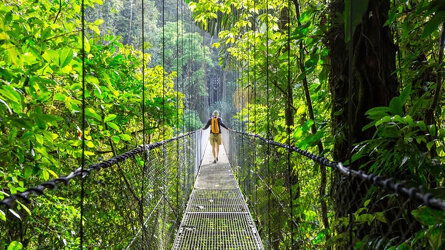
Launching in 1981, Explore offer classic small group and private adventures to over 130 countries. Read more
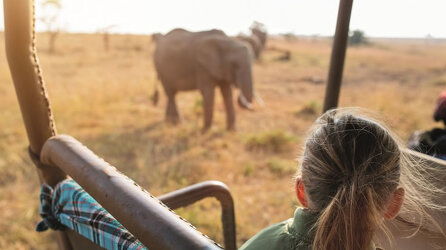
You won't find any 40-seater tourist coaches on an Explore family adventure holiday. To ensure you get the most out of your trip Explore keep group sizes small. Read more
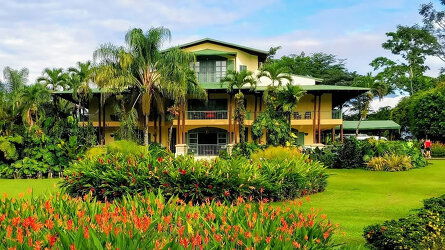
The places Explore stay are every bit as important as the sights they visit and the things you do. Read more

Launching in 1981, Explore offer classic small group and private adventures to over 130 countries. Read more

You won't find any 40-seater tourist coaches on an Explore family adventure holiday. To ensure you get the most out of your trip Explore keep group sizes small. Read more

The places Explore stay are every bit as important as the sights they visit and the things you do. Read more
Brochure
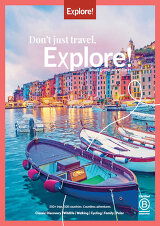
Explore Small Group Adventures (2025-26)
Brochure

Explore Small Group Adventures (2025-26)
Availability
 USD
USD
A definite departure means minimum numbers have been reached for this departure to operate. Your Global Journeys Travel Advisor will check the availability of your departure date when you enquire. Additional savings may apply. We guarantee the lowest price in USA. T&C’s apply.
Tour & cruises prices are per person. Prices shown have savings applied, are subject to availability and may be withdrawn at any time without notice. Pricing and trip details are correct at this point in time, however are subject to confirmation at the time of booking and are subject to change by Explore. For cruise itineraries, cabin images are sourced from Explore. These should be treated as indicative only. Cabin inclusions, upholsteries and room layout may differ to the image(s) shown depending on the ship selected and your sailing dates.
